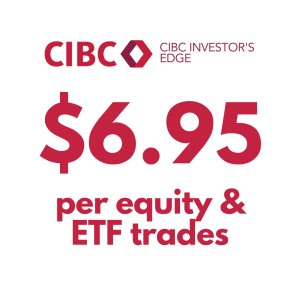
Ever set up automated payments or withdrawals? That’s a strong, financially savvy move to get your finances organized. But what happens when there’s not enough money in the account? Your heart might skip a beat when you see the notification: you’ve gone into overdraft. We get it; it never feels good to see your chequing account with a negative balance. Of course, you might just transfer some of your savings into it and make up for the hit — along with paying a hefty Non-Sufficient Funds (NSF) fee, no fun. Our financial advisors here at Advisorsavvy cover this topic frequently with clients like yourselves. Budgeting properly and cash flow management can help you avoid overdraft, but there’s actually an even more bulletproof solution: overdraft protection.
In this article, we’ll walk through the ins and outs of overdraft protection, how much it costs, what it offers, and how to know if it’s worth it for you. Keep reading to learn more!

Table of contents
- What is overdraft protection?
- Do you have to pay for overdraft protection?
- Does overdraft protection affect credit scores?
- Can I withdraw money with overdraft protection?
- Does overdraft protection cover cheques?
- How do I find out if I have overdraft protection?
- Can you opt-out of overdraft protection?
- Is overdraft protection a good idea?
What is overdraft protection?
Overdraft protection is a financial product that covers the cost of your over-withdrawn amount for a flat fee and interest, which is almost always cheaper than paying costly non-sufficient fund (NSF) fees. Sample transactions that can put you into overdraft include any automated payments, cheques, and withdrawals. Credit card and debit card purchases at the store won’t usually go through if you have insufficient funds, but that’s not always the case.
While overdraft can help you in a pinch, you shouldn’t see it as a long-term solution. If you find yourself going into overdraft often, you might consider more expansive financial products like lines of credit or personal loans. Alternatively, you might need to put your spending back into check!
Your credit score & report. Always free, forever
It takes 3 minutes to join 20+ million people who trust ClearScore to help them improve their financial future
How does overdraft protection work?
Overdraft protection works in two ways:
- Basic overdraft protection: With this type of protection, your bank will loan you the cost of the overdraft amount, up to a predetermined amount. Then, you’ll have to pay interest on the overdrawn amount. For example: if you go into overdraft by $100, you’ll have to repay the $100 loan plus interest.
- Link to another bank account or credit account: Here, your bank will automate a payment from another one of your accounts to the account in overdraft. This could be a transfer from a savings account, another chequing account, personal line of credit, or home line of credit (HELOC). For example: if you go into overdraft by $100, you won’t need to pay the bank the amount since they’ve simply moved your existing funds from another account to the one in overdraft. Then, you’d just be responsible for the overdraft protection fee. If you don’t have the funds, you’ll be charged an NSF fee in most cases.
The first type of overdraft protection works pretty similar to credit — and not everybody is eligible for credit. To apply for this kind of service, you’ll need to fill out an application and include personal details like income, debts and loans, credit history, and overall history with that particular financial institution. Keep in mind that you can’t apply for overdraft if you’re under the age of 18 (or 19 in the provinces and territories BC, NB, NS, NWT, NFL, NVT, and YK).
Related Reading: Living Pay Cheque to Pay Cheque and How to Stop
Do you have to pay for overdraft protection?
Yes. Overdraft protection isn’t free, but fees vary depending on the financial institution. Let’s take a closer look below.
How much does overdraft protection cost?
It depends on your specific agreement and the financial institution. For example, RBC’s overdraft protection costs $5 monthly, plus interest fees on the overdraft amount. This means that even if you go into overdraft multiple times in one month, you’ll still only be charged a capped $5 plus interest.
Other overdraft products might have pay-per-use fees instead of monthly fees. The Canadian government notes that these pay-per-use fees are usually capped at $5 as well. While this might not be a big hit if you go into overdraft a maximum of once per month, multiple overdraft events can hike those pay-per-use fees pretty high.
Our advice? Inquire with your financial institution about their overdraft protection fees. Even if a certain fee type is listed online, you might be able to change it after speaking to an advisor.
There are a few scenarios in which you won’t have to pay for overdraft. For example, you might already have it included in your existing financial product, like your bank accounts. Some banks also choose not to charge overdraft protection fees if you repay the overdraft amount quickly (in the same day) or if the amount is miniscule (under $5). Be sure to read the fine print of the fees before agreeing to overdraft protection with your bank!
CIBC Investor’s Line Offer
Up to $6.95 per online stock or ETF trade. Plus, there’s no minimum account balance.
Does overdraft protection affect credit scores?
Yes, overdraft protection can affect your credit score if you don’t repay the overdraft amount loaned to you by the bank on time. Remember, basic overdraft protection works like credit — late payments will hurt your credit score. Your overdraft agreement will lay out the deadline for you to repay the loan. Make sure to pay this amount on time and treat it like any other loan. If you can’t access the agreement, check with your bank.
Can I withdraw money with overdraft protection?
So, you have overdraft protection. Does that mean you can use your bank account like a credit card? You can — but it won’t serve you well in the long run. Overdraft protects you from NSF fees, but not from interest if you have a plan where banks loan you the money.
In addition, overdraft protection is not designed to be used for withdrawals or support purchases. It’s meant to preserve your finances and avoid additional fees if you accidentally overdraw an account. For this reason, you should use overdraft as it’s intended.
However, the ability to withdraw money, even when you don’t have enough funds, might appeal if you experience an emergency and need quick cash.
Related Reading: What is Travel Insurance and Do I Need It?
Does overdraft protection cover cheques?
Do you write cheques for certain expenses the old-fashioned way? Once someone cashes your cheque, that money leaves your bank account and if you don’t have enough funds? Overdraft. So yes, overdraft protection does cover cheques.
How do I find out if I have overdraft protection?
Easy — talk to your financial institution about your existing financial products. They’ll help you figure out whether overdraft protection is included in any of them, or if you are eligible to purchase it.
Can you opt-out of overdraft protection?
Yes, but the way to do it depends on your financial institution. If a certain financial product (a chequing account, for example), already includes overdraft protection, it’s likely you won’t be able to opt-out. And even if you can, the bank might not make the overall product cheaper and simply recommend you try a different product.
However, if you purchase overdraft separately, you can definitely cancel it. Simply contact your bank and request they remove the service from your account.
How to cancel overdraft protection
The Canadian government notes that most financial institutions require 10 days written notice to cancel overdraft protection. Still, you should double-check with your bank because different banks might have varying notice requirements. This information is definitely in your overdraft protection agreement’s terms and conditions.
Usually, a written letter or phone call is sufficient as a form of notice. But remember, even once you cancel the protection, you’ll still have to pay any outstanding monthly protection fees that you still owe.
CIBC Investor’s Line Offer
Up to $6.95 per online stock or ETF trade. Plus, there’s no minimum account balance.
Is overdraft protection a good idea?
Overdraft protection is inexpensive enough to make it worth the investment. Things happen, and you might not be on top of your withdrawals every minute of your life. If you have a monthly overdraft protection plan that costs $5 per month, it’s worth it if you go into overdraft a minimum of twice per year. This is assuming that the average NSF fee is $50, so you’d save a potential $40 after the total annual cost of your overdraft protection. But with that said, overdraft might not be necessary if you have a healthy balance in your chequing account and an adequate emergency fund. It all depends on your spending habits and current financial position!
Do you find yourself going into overdraft frequently? Overdraft protection can help, but it shouldn’t make up your entire financial strategy. That’s where a certified financial advisor comes in. They’ll help you assess your budget and financial goals and help you become more aware of your financial habits to improve them. Ready to level up your financial life? Talk to a financial advisor today!
Read More: Banking vs Financial Services: What’s the difference?


